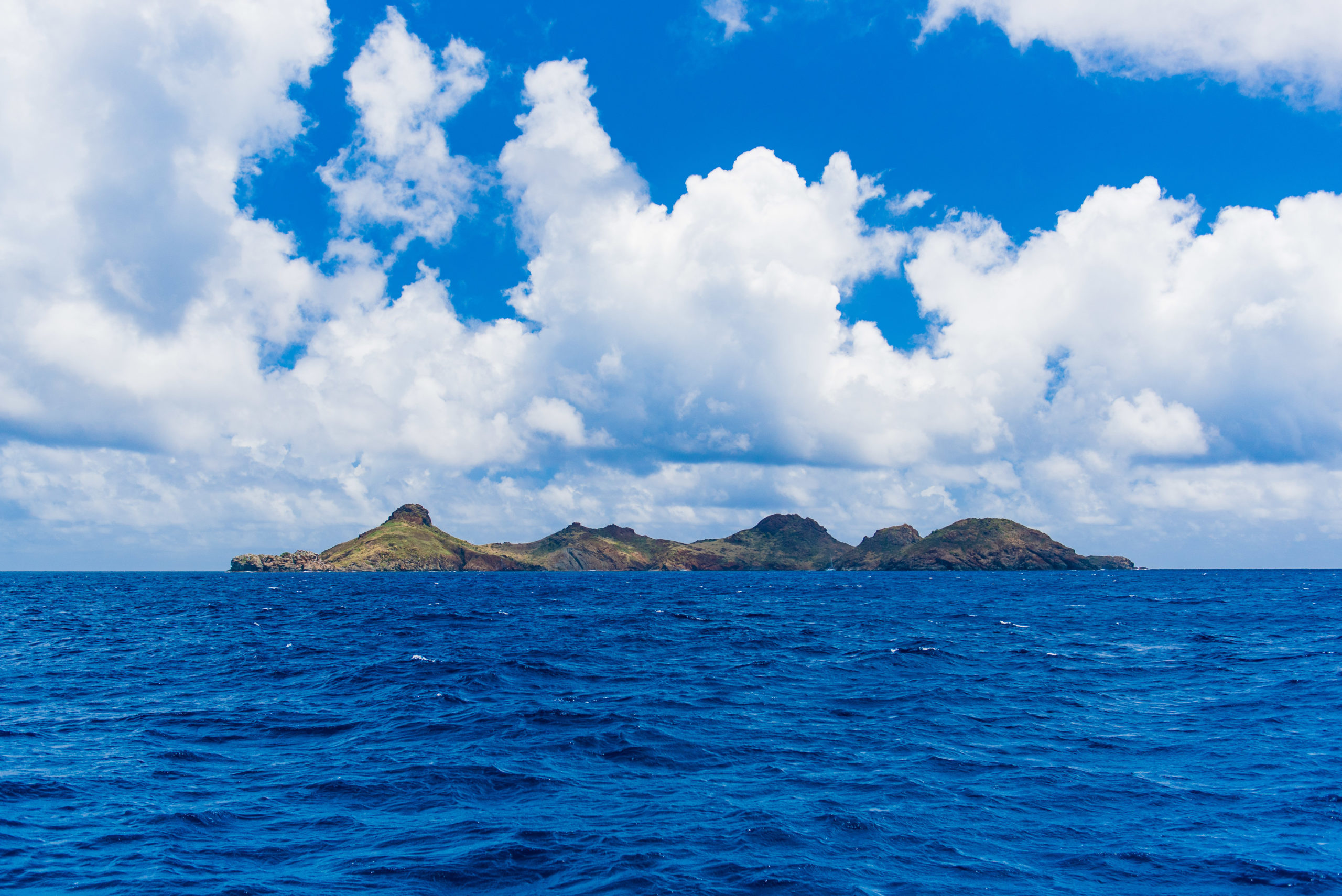Île Fourchue and the Legend of Balthazar Biguard
Of all the off-the-beaten-path uncommon destinations we’ve come across on our Caribbean travels, few are as remote or unknown as Île Fourchue. The island is the largest of St Barts’ satellite islands. Don’t fret, though, if you’ve never heard of it. I hadn’t either until Patrick decided to set sail from St Martin to St Barts a few years back. Île Fourchue, you see, lies just a bit more than midway between SXM and its tres-chic cousin to the southeast. As the islet is a bit closer to St Barts, though, it is officially part of the Collectivity of Saint-Barthélemy.
About Île Fourchue
Should you find yourself sailing the same route as Patrick some day, a stop a Fourchue Island would be a very good idea indeed. For one thing, the islet is uninhabited. By humans, that is. Among the wildlife you’re most likely to see here lizards. Three different varieties make their home here – Caribbean ameiva, Anguilla anole, and the Lesser Antillean iguana.
Petite Islette, which sits off the western tip of Fourchue, also offers great birdwatching. The tiny islet is a big breeding ground for brown boobies. As such, the islet has been recognized as one of only three Important Bird Areas (IBA) in St Barts by BirdLife International.
Another form of wildlife that’s had a big impact on Île Fourchue are goats. As is often the case with goats, though, that impact has wrought pluses and minuses.
On the plus side, the goats’ voracious appetites kept vegetation low. This makes hiking the highlands here a bit easier. Of course, that lack of native vegetation hasn’t been good for the overall health of the island. Thus, the Government of St Barts has taken steps in recent years to remove the goats from the Fourchue peaks.
Oh, and speaking of those peaks, they’re pretty distinctive in their own right. The highest tops out at an elevation of 103 feet above sea level. From out at sea, they look like a range of five hills stretching along the horizon. It’s no wonder, then, that Île Fourchue was formerly known as “Five Islands.”
What they are in fact, though, are the remnants of a dormant, long-collapsed volcanic caldera.
The bay inside the caldera is sheltered on the three sides by the hills. A rocky beach along the bay allows for access to the island. You won’t, however, find the kind of jaw-dropping pristine beaches common of fairytale deserted island lore here.
In this way, Île Fourchue seems more hermit haven than romantic private islet. Its history even bears this out…
Rock Fit for a Recluse
The most famous/infamous and likely only person ever to live on Île Fourchue was a man named Balthazar Biguard. Originally from Marseille, he apparently wasn’t down with the French Revolution. So, he took off to the Caribbean in search of safe haven. Eventually, he happened upon St Barts, which at the time was part of Sweden.
This worked well for Monsieur Biguard for a time. He even made things official by changing his citizenship to Swedish.
You might think that old B.B. would be good and fine just living out his days far from his native France as a Swede in St Barts, right?
Well…actually, no.
For some reason, Balthazar Biguard wasn’t done running when he arrived in St Barts. To really get away from everything and everyone, he eventually settled on Île Fourchue. There he lived alone, in complete solitude for the rest of his life.
He died in 1827 at the age of 85.
Balthazar Biguard is buried somewhere in the hills of Île Fourchue, his lonely grave the only one on the island… Just as he would’ve liked it.
